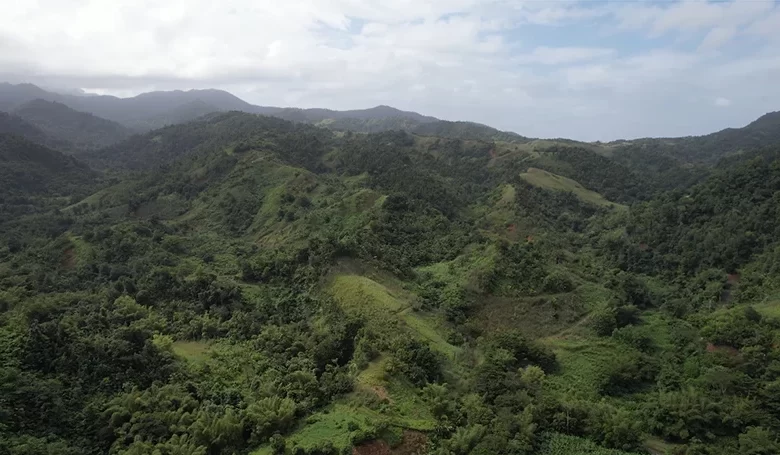Dominica’s Natural Resources

Dominica’s natural resources are abundant and diverse, playing a crucial role in the island’s economy and ecological heritage. Known as the Nature Isle of the Caribbean, the country boasts lush rainforests, fertile soils, extensive freshwater resources, geothermal energy potential, and rich marine environments. These resources support vital sectors such as agriculture, tourism, energy, and fisheries, contributing significantly to sustainable development and the well-being of its population.
Diversity of Dominica’s Natural Resources
Dominica’s natural resources, including montane forests, abundant rivers, and fertile agricultural lands, shape its unique environmental landscape and economic vitality. Embracing conservation and sustainable development, Dominica strives to protect these resources, securing its status as the Caribbean’s Nature Island.
Forests and Biodiversity
Approximately 60% of Dominica’s land area is covered by rainforests, making it one of the most forested islands in the Caribbean. The Morne Trois Pitons National Park, a UNESCO World Heritage Site, encompasses over 17,000 acres of tropical forest. These forests are home to a wide array of flora and fauna, including over 1,200 plant species and numerous endemic species.
Endemic Species
Dominica’s forests provide habitats for unique wildlife, such as the national bird, the Sisserou Parrot (Amazona imperialis), and the Jaco Parrot (Amazona arausiaca). The Sisserou Parrot is a critically endangered species with an estimated population of fewer than 250 individuals. Conservation efforts are ongoing to protect these species from threats like habitat loss and invasive species.
Water Resources
Dominica is often called the “Land of 365 Rivers,” highlighting its abundant freshwater resources. Major rivers include the Layou River, Roseau River, Pagua River, and Indian River. These rivers support domestic water supply, agriculture, and hydroelectric power generation. The island’s three hydroelectric plants—Laudat, Trafford, and Padu—contribute approximately 30% of the country’s electricity needs.
Lakes and Wetlands
High-altitude lakes like Freshwater Lake and Boeri Lake are significant freshwater reservoirs. Freshwater Lake, located at 2,500 feet above sea level, is the largest lake on the island and serves as a critical water source. Wetlands and mangroves along the coast provide important ecosystems for fish breeding and coastal protection.
Geothermal Energy Potential
Dominica’s volcanic origin has endowed it with significant geothermal features. The presence of active geothermal sites like the Boiling Lake, the world’s second-largest hot lake, and the Wotten Waven Caldera indicates substantial potential for geothermal energy development. The government has invested over US$50 million in exploring this potential, aiming to generate up to 120 megawatts of electricity. In 2019, drilling of test wells in the Roseau Valley confirmed the viability of the resource, and plans are underway to construct a 7 MW geothermal power plant, expected to reduce the country’s reliance on imported fossil fuels by 33%.
Agricultural Resources
The island’s fertile volcanic soils support a variety of crops. Agriculture employs about 40% of the workforce and contributes approximately 17% to the GDP. Key agricultural products include bananas, citrus fruits, coconuts, cocoa, coffee, and root crops like yams and dasheen. Before the decline due to hurricanes and market changes, the banana industry accounted for over 50% of export earnings.
Sustainable Agricultural Development
Initiatives like the Dominica Rural Enterprise Project (D-REP) and the National Association of Youth in Agriculture (NAYA) promote sustainable farming practices. These programs aim to increase productivity while preserving the environment, aligning with Dominica’s Sustainable Agricultural Development Goals. Organic farming is encouraged, and Dominica has been moving towards becoming an organic island.
Marine Resources
Dominica’s coastline and marine environments are rich in biodiversity. The surrounding waters are home to over 22 species of whales and dolphins, including the sperm whale, making it a premier destination for whale watching. The Soufriere Scotts Head Marine Reserve and the Cabrits National Park Marine Section protect coral reefs and marine life, supporting fisheries and tourism.
Fisheries
The fishing industry provides livelihoods for approximately 2,000 people. Common fish species include tuna, mahi-mahi, and snapper. The annual fish catch is estimated at 1,000 metric tons. Sustainable fishing practices are promoted to ensure the long-term viability of marine resources.
Mineral Resources
Dominica’s mineral resources include volcanic ash, pumice, clay, and sand. The Roseau Tuff, a volcanic deposit, is utilized in construction. While there is potential for mining activities, the government prioritizes environmental protection and sustainable use of these resources to prevent the degradation of natural habitats.
Conservation and Environmental Protection
Efforts to conserve natural resources are guided by the Environmental Protection Act and managed by the Forestry, Wildlife and Parks Division. Programs address challenges like invasive species, deforestation, and the impacts of climate change. Reforestation projects are undertaken to restore areas damaged by hurricanes, such as Hurricane Maria in 2017, which destroyed an estimated 25% of the island’s forest cover.
Community Engagement
Community initiatives like the Community Day of Service and organizations like the Dominica Conservation Association involve citizens in conservation efforts. The Kalinago Territory, home to the indigenous people, the Kalinago, integrates traditional knowledge in resource management, promoting practices that have sustained their communities for centuries.
Sustaining the Nature Isle for Future Generations
Dominica’s commitment to conserving its rich natural resources—forests, water, marine, and mineral reserves—underscores its pursuit of sustainable development. The island preserves its natural heritage through community involvement, environmental protection laws, and resource management, promoting resilience and ecological harmony for future generations.




